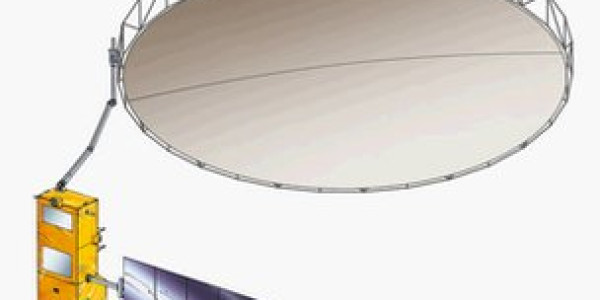By Jonathan Amos Science correspondent, BBC News Biomass will have a 12m reflector antenna to catch the returning radar signal A satellite that can “weigh” the Earth’s forests has just been given the go ahead by the European Space Agency. Biomass, as it will be known, is expected to launch in 2020. The spacecraft will carry a novel radar system that is able to sense the trunks and big branches of trees from orbit. Scientists will use Biomass to calculate the amount of carbon stored in the world’s forests, and to monitor for any changes over the course of the five-year mission. The satellite’s data should help researchers understand better the role trees play in the cycling of carbon on Earth and, by extension, the influence this has on the planet’s climate. “Biomass will give us unprecedented knowledge on the state of the world’s forests and how they are changing,” said Prof Shaun Quegan, who was one of the key proposers of the mission. “This will give us a firm basis for treaties that aim to help developing countries preserve their forests, such as the UN Reducing Emissions from Deforestation and forest Degradation (REDD+) initiative. “In addition, Biomass will return information on national forestry resources, and that’s important for things like energy and biodiversity,” the Sheffield University researcher told BBC News. Esa’s Earth Observation Programme Board approved the 400m-euro (£340m) Biomass mission on Tuesday. Europe’s Earth Explorers Goce was launched in 2009 to map the subtle variations in Earth’s gravity field Smos (above) has been studying ocean salinity and soil moisture for three years Cryosat-2 was launched in 2010 to measure the shape and thickness of polar ice Swarm is a trio of satellites that will map the Earth’s magnetism from this year Aeolus is an innovative laser mission that will measure winds across the globe Earthcare will also use a laser to examine the role of clouds and aerosols in climate change Biomass will launch in 2020, using a radar to map the planet’s forests The satellite will be the seventh of the agency’s so-called Earth Explorers – a series of spacecraft that are designed to do innovative science in obtaining data on issues of pressing environmental concern. Three missions have so far gone into orbit, returning remarkable new information on gravity, polar ice cover, soil moisture and ocean salinity. A fourth, to study the Earth’s magnetic field, launches this year; with satellites to study the wind and fine particles in the atmosphere further back in the development schedule. Biomass will be a 1.2-tonne satellite at launch, meaning it will probably go up on Esa’s new Vega rocket, which successfully conducted only its second flight overnight. Its sole instrument will send down a 70cm radar pulse that will penetrate the leafy canopies of forests but scatter back off the large woody parts of trees. It will sense the volume of material at a resolution of about 200m. In essence, it will be able to weigh the amount of carbon tied up in the world’s forests. A 12m reflector antenna will be needed to capture the return signal from the radar pulse. An antenna of this size has to be folded for launch to fit inside the Vega vehicle, and then unfurled once the satellite has reached its 650km-high orbit. Currently, Biomass will not be permitted to operate over North America, Europe and the Arctic. The US Department of Defense (DoD) says the spacecraft’s radar would interfere with its missile early-warning and space-tracking systems. Prof Quegan said a dialogue with the DoD to get some operational data over these regions would undoubtedly continue as the mission moved towards its launch date, but even if the Americans stood firm on the issue the loss of coverage would not severely impact the project’s science. The radar’s 70cm wavelength penetrates the leafy canopy to see the big branches and trunks “First of all, it hardly affects the tropics where the really big unknowns are,” he explained. “It doesn’t affect the whole of Eurasia where the big boreal forests are found; and it doesn’t affect the temperate forests of China where the biggest re-growth on the planet is occurring. And in terms of REDD countries, we lose just a handful.” The UK’s Natural Environment Research Council (Nerc) has funded much of the basic science underpinning the Biomass concept. “We’re delighted to see that Esa has selected the mission and regards it as scientifically important,” said chief executive Prof Duncan Wingham. “Nerc is really looking forward to the marvellous science that this mission will provide and in particular the greater understanding it will give us of the carbon cycle, which is its primary goal,” he told BBC News. Britain is a senior partner in Esa’s Earth observation programme and will be expecting a significant industrial role in the Biomass mission. Jonathan.Amos-INTERNET@bbc.co.uk and follow me on Twitter: @BBCAmos Taylor Scott International
Esa Approves Biomass Satellite To Monitor Earth’s Forests

This entry was posted in Investment, investments, News, Property, Taylor Scott International, TSI, Uk and tagged atmosphere, climate-change, development, green, investment, investments, news. Bookmark the permalink.







